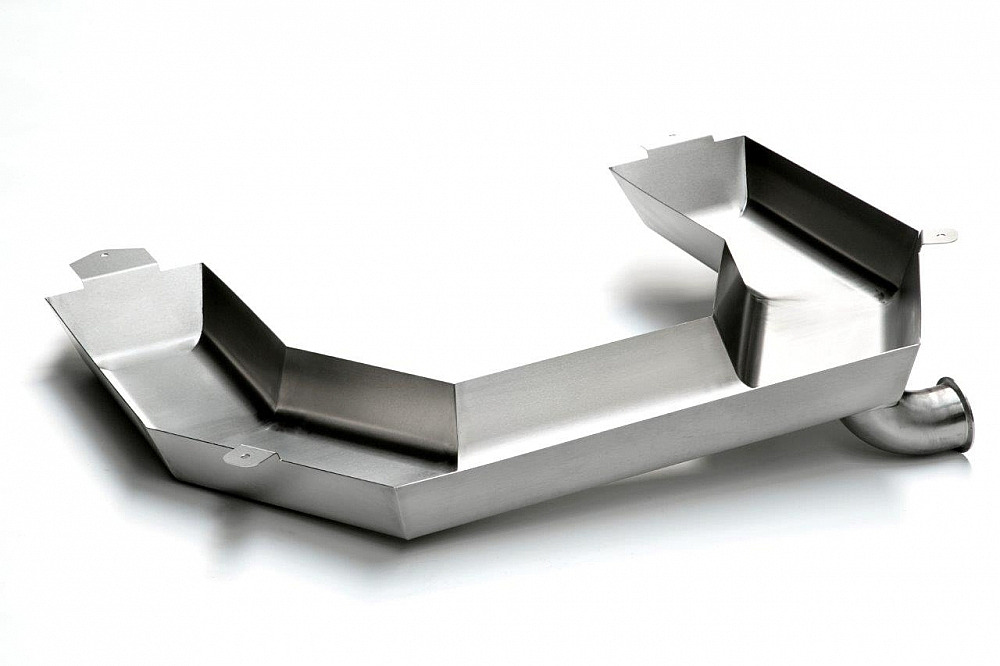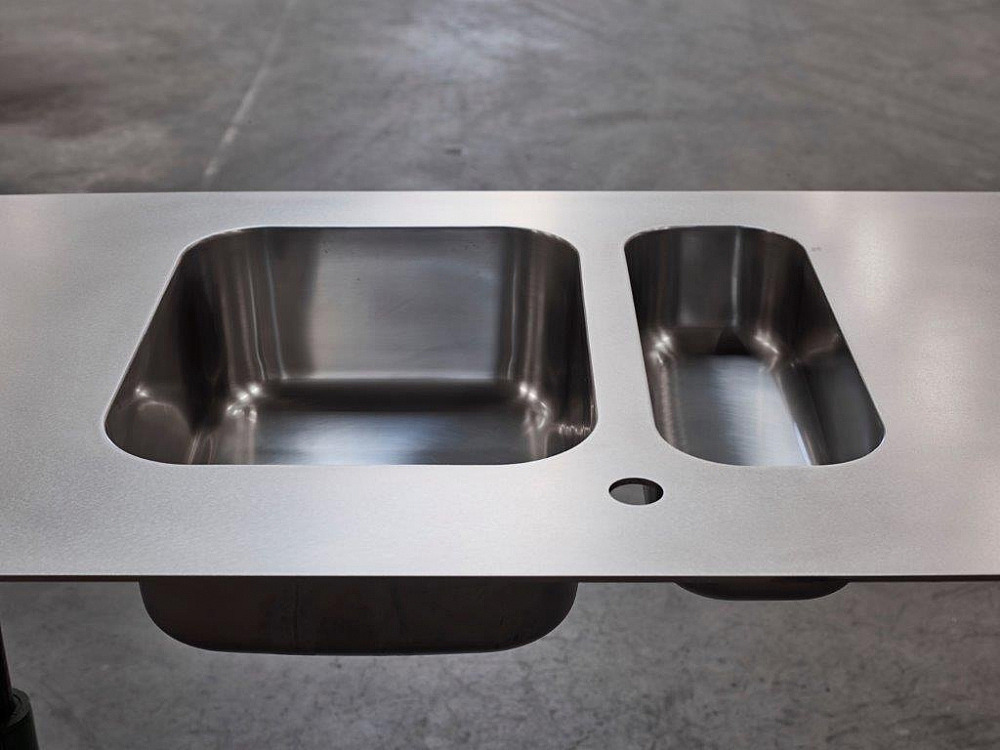Stainless steel maintenance
Stainless steel, also known as inox or corrosion-resistant steel, is a material that is easy to clean and highly suitable for hygienic applications in kitchens, the food industry, the pharmaceutical industry, and more. This is why it remains a popular material.

General
Daily Cleaning:
- Use a soft, damp cloth or sponge and a mild dish soap.
- Rub in the direction of the brushed structure to prevent scratches.
- Rinse the surface thoroughly to remove all soap residue.
Periodic Maintenance:
- For a shiny finish, you can use a specially formulated stainless steel cleaner.
- Apply the stainless steel cleaner according to the manufacturer's instructions and rub gently.
- Rinse the surface.
Important to know; prevention is better than cure:
- Like all materials, stainless steel also requires maintenance, albeit minimal.
- Does your stainless steel have a grain direction? Always clean in the direction of the grain.
- Always use a soft cloth; never abrasive sponges or materials.
- Always dry stainless steel after cleaning or tidying up to prevent (lime) stains.
- Use a dish for soaps.
- Regularly clean with a 1:1 mixture of vinegar and water.

Did you know that...
Know that stainless steel gradually develops a slightly darker tint over time. This layer is protective and forms gradually due to exposure to air, moisture, and other environmental factors. Particularly for kitchen countertops that come into daily contact with substances such as lemon juice, vinegar, tomatoes, or soaps, unintended light stains or color variations can occur (similar to what you might see with a tiled floor). Often, these fade out over prolonged use, returning to a more uniform appearance (unless you consistently place your dish soap bottle in the same spot). For this reason, we recommend regular cleaning of kitchen countertops with a 50-50 vinegar-water mixture, which helps maintain the natural light color of the stainless steel.
Safe Products for Stainless Steel
Mild dish soaps – dish soap solution: | Ideal for daily cleaning. |
| Cif or Cif Cream (a non-abrasive version with a soft cloth): | Safe for removing stubborn stains, provided it is used non-abrasively. Do not use a scouring pad. Rinse thoroughly after use |
| Stainless steel cleaners: | Specifically designed for stainless steel and often effective for removing stains and restoring shine |
| Diluted vinegar or lemon juice: | For light limescale stains, but always rinse well and do not use undiluted. A 1:1 dilution is ideal; rinse afterward |
| Baking soda: | Make a paste of baking soda and water, apply it to the ring, and gently rub with a soft cloth. Rinse thoroughly |
| Non-abrasive car polish/Simoniz: | Is suitable, provides good results for stains, but is not food-safe, so clean very thoroughly after use. |
Note that some products are not food-safe, so cleaning after use is necessary.
Be aware that with products such as Cif and car polish, the treated area will become lighter, so you will need to treat the entire surface evenly to avoid new stains.
Unsafe Products for Stainless Steel
| Abrasive cleaning agents: | Avoid Cif Powder or other abrasive agents that can cause scratches |
| Chlorine or bleach: | Chlorine can severely damage stainless steel and cause corrosion. Attention: read the fine print, as products you might not expect can sometimes also contain chlorine |
| Products not listed in our 'safe list' | Products like Cillit Bang are too aggressive for stainless steel |
| Steel wool or abrasive sponges | These can leave deep scratches on the stainless steel surface. |